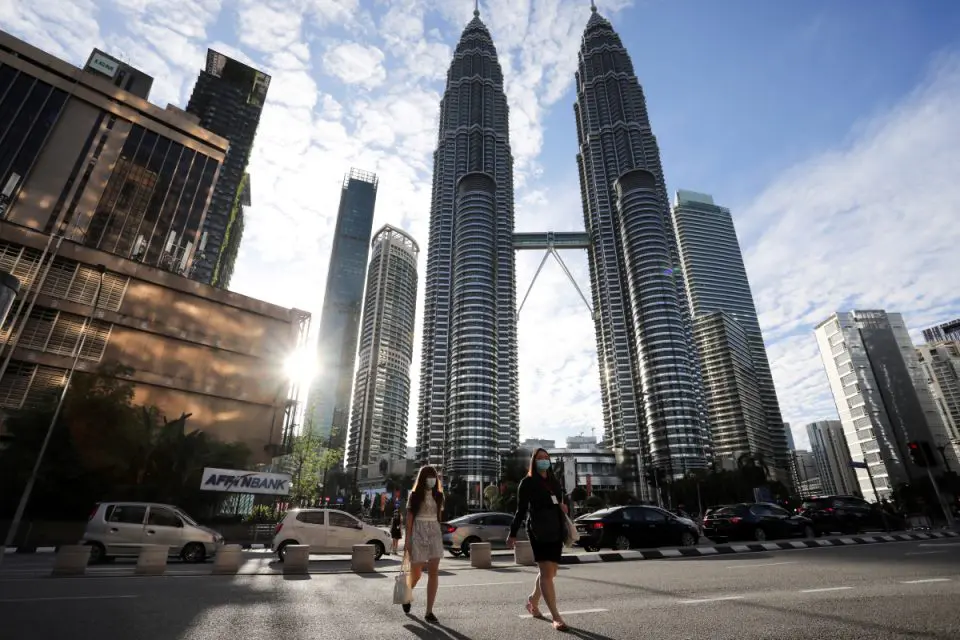KUALA LUMPUR, Jan 19 — RHB Banking Group has revised its forecast for Malaysia’s Gross Domestic Product (GDP) this year to 5.4 per cent from 6.3 per cent, reflecting a more conservative growth outlook amid the re-imposition of the movement control order (MCO 2.0).
The group’s base scenario assumed MCO 2.0 would run for four weeks, chief economist and head of market research Dr Sailesh Kumar Jha said.
“Private consumption is projected to be the most impacted by the MCO 2.0 restrictions whereby retail activity is likely to see a decline judging by the drastic drop in the mobility index.
“However, the fall in mobility was seen to be lesser than MCO 1.0 (March 2020) which could reflect in a relatively milder, yet significant, impact to retail,” he said in a research note today.
Additionally, he said, MCO 2.0 was assumed to be shorter, leading to relatively lesser impact.
“Separately, recent natural disasters on east peninsula and Borneo also add to the woes although expected to be limited due to the region’s small contribution to total GDP,” he said.
Jha said investment growth was also likely to be impacted due to the softer construction sector, in which so far only selected activities were allowed to operate, including maintenance and critical repairs as well as major public infrastructure projects.
“Even with exemptions, the tight standard operation procedure (SOP) requirement hampers operations and project timeline.
“Additionally, our checks with the industry players shows that the implementation and funding could be a major risk,” he said.
Jha said smaller contractors might find it difficult to take advantage of the opportunity from the government’s large development expenditure given the deteriorating balance sheet.
“Additionally, businesses’ difficult access to credit and tight cash flows further poses a stumbling block to fast construction implementation,” he said.
On the government’s latest fiscal stimulus announcement, Jha said it would help to partially offset some downside pressures to private consumption in the near term but not much.
He said so far, the RM15 billion fiscal stimulus was a repeat of the budget announcements with few exceptions including the wage subsidies and loan moratorium extensions.
“Overall, we expect the actual fiscal spending by the government should be in the range of RM4 billion to RM5 billion.
“On the year as a whole, fiscal support is expected to continue to be extensive. The return to some semblance of normalcy is not expected until the third quarter of this year (Q3 2021),” he said.
He said according to the government’s vaccine rollout timeline — 1 million vaccine doses to be received in Q1 2021, 1.7 million in Q2 2021, 5.8 million in Q3 2021 and 4.3 million in Q4 2021 — access to vaccine for the masses would likely be available in Q3 2021 at the earliest, as the priority was given to the vulnerable groups.
Hence, RHB expected some form of restrictions to remain in place much throughout this year
On monetary policy, Jha said Bank Negara Malaysia (BNM) was expected to cut the Overnight Policy Rate (OPR) by 25 basis points (bps) to 1.5 per cent in Q1 2021.
“The risks are tilted towards another 25 bps cut in Q2 2021. Previously we expected BNM to be on hold in 2021.
“Monetary policy loosening is needed since the momentum of growth will weaken significantly in the first half this year, against the backdrop of the government infrastructure programme (which is) likely to surprise on the downside this year,” he said.
He said the statements from the central bank’s January 20 policy meeting would be quite dovish and include language alluding to a deterioration in economic conditions due to the Covid-19 pandemic, significant downside risks to consumer spending emanating from MCO 2.0, uncertainties on global growth and an uneven pace of growth across sectors.
“BNM could remain on hold on January 20 since the government had announced a relief package on January 18 and it could await consumers and businesses respond to this policy package,” he said, adding that the central bank might cut the OPR by 25 bps at the March 4 policy review.
Jha suggested the loosening of monetary policy given his view that the government’s 2021 development expenditure programme of RM148 billion was too optimistic and thus would provide limited support to an economy where headline GDP growth on quarter-on-quarter basis would contract by 6.7 per cent in Q1 2021 compared to 2.3 per cent in Q4 2020.
“From our recent virtual meetings with companies operating in the infrastructure sector, we gather that there is limited visibility on tenders coming through for large infrastructure projects in 2021, such as Mass Rapid Transit 3,” he said.
He said much of the development expenditure in 2021 would relate to ongoing projects from previous years.
“In addition, in our conversations with contacts in Singapore, we believed the high-speed railway project from Kuala Lumpur to Singapore is unlikely to be reignited in 2021,” he said.
Meanwhile, RHB has maintained its real public investment GDP projection at 8.1 per cent year-on-year in 2021 against -4.2 per cent in 2020.
“In our view, the real development expenditure by the Federal Government and the non-financial public corporation indicates a strong upward trajectory for 2021 at RM118 billion versus the 2020 estimate of RM101 billion.
“Our estimates also suggested that 2021 real public investment spending will be around RM80 billion (compared to) RM74 billion in 2020,” he added.
— Bernama





